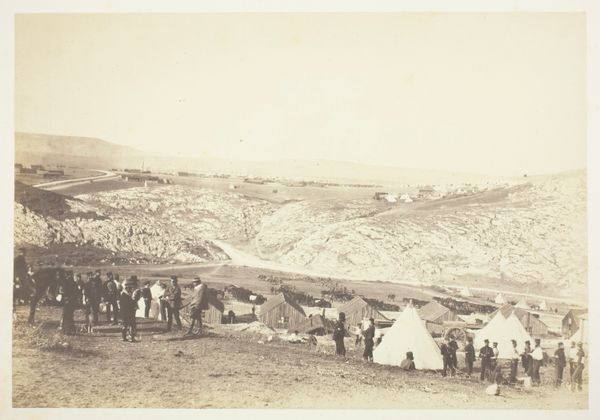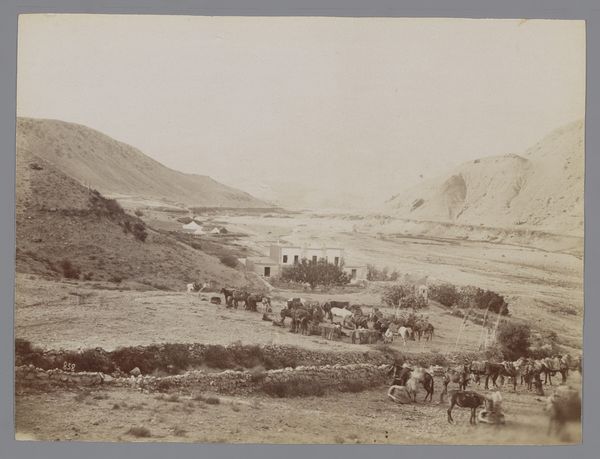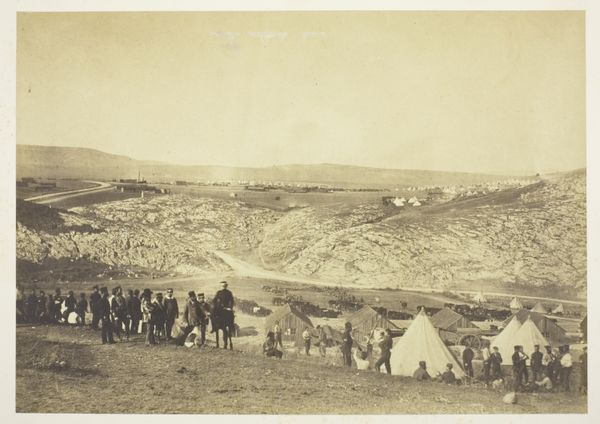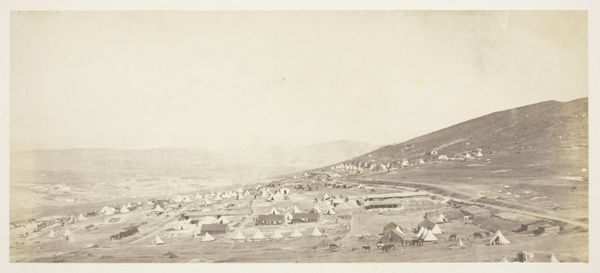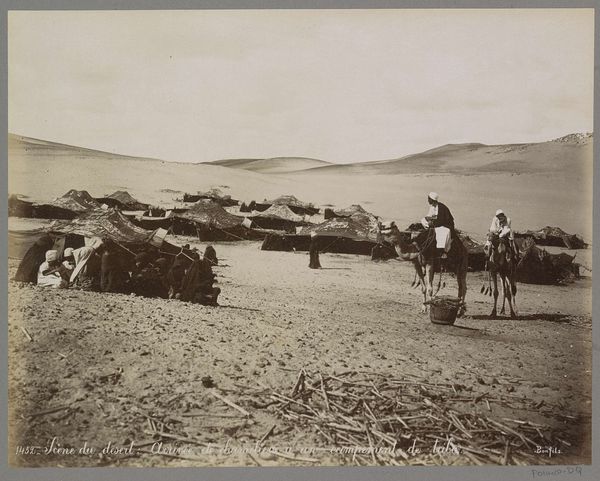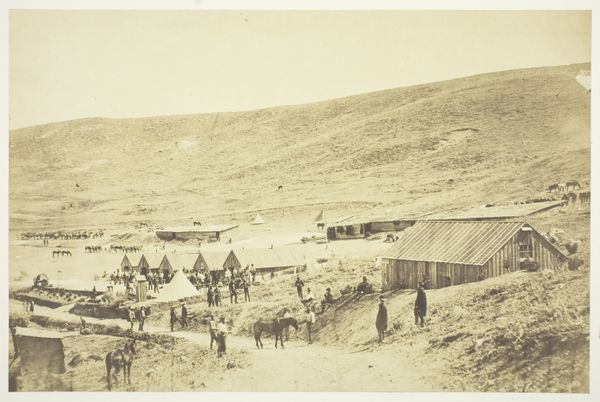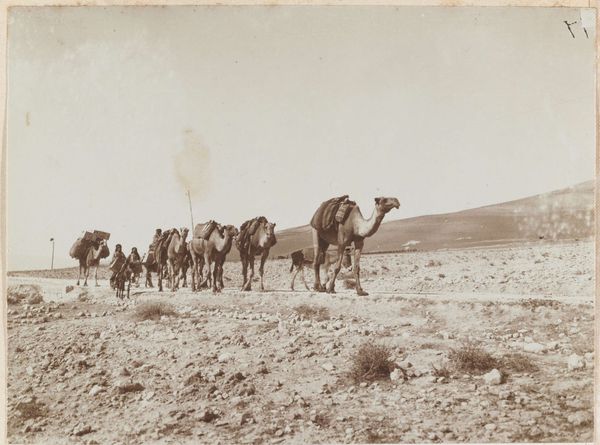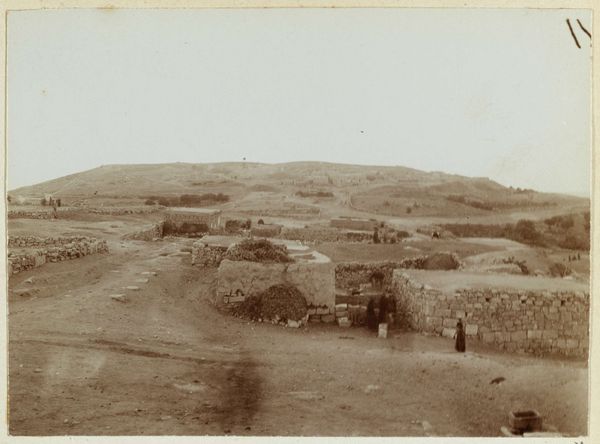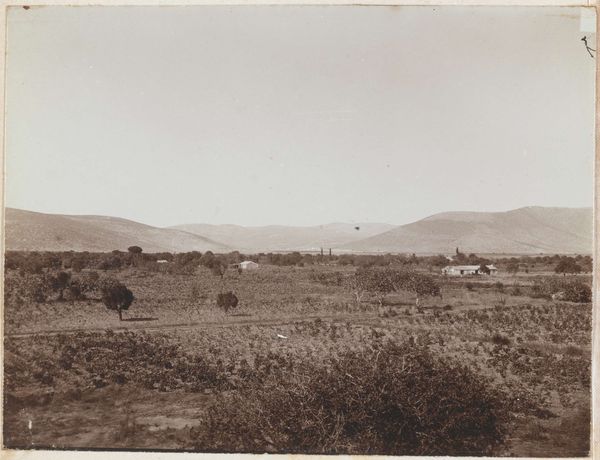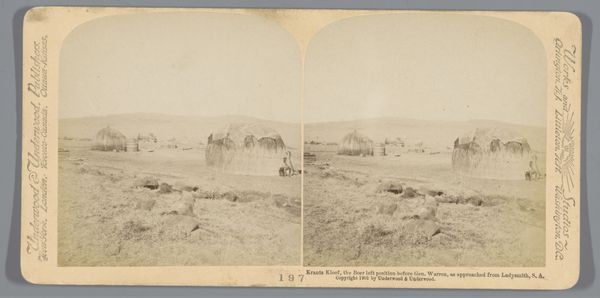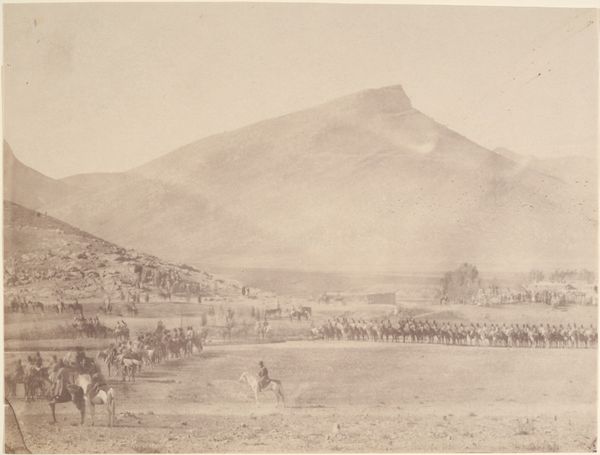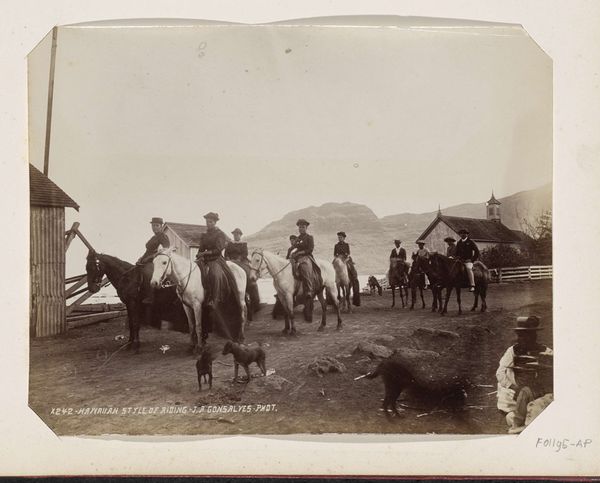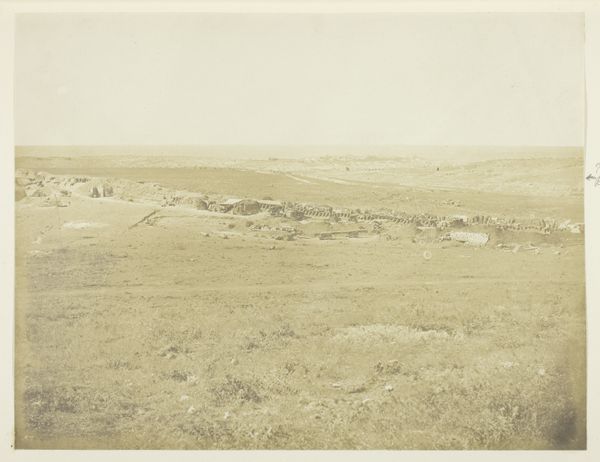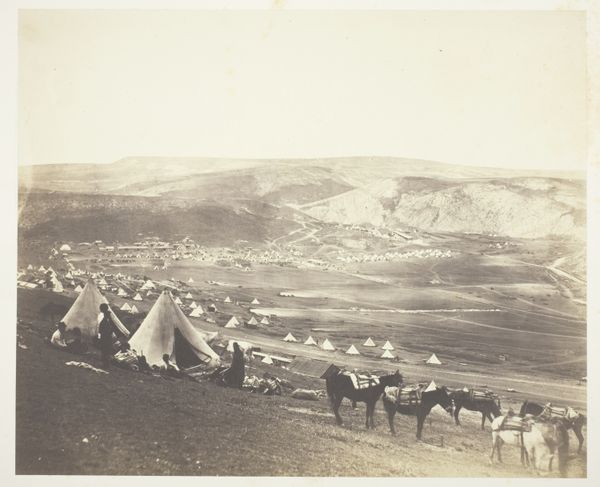
Gezicht op Jericho vanaf de vlakte, links het Jordan Hotel, op de voorgrond kinderen met een kudde c. 1867 - 1895
0:00
0:00
maisonbonfils
Rijksmuseum
photography
#
landscape
#
photography
#
orientalism
#
19th century
Dimensions: height 220 mm, width 282 mm
Copyright: Rijks Museum: Open Domain
Curator: Here we have an albumen print by Maison Bonfils, titled "View of Jericho from the Plain, with the Jordan Hotel to the Left, and Children with a Herd in the Foreground." The print dates circa 1867 to 1895. Editor: It feels almost like a stage set, stark and depopulated. There’s this bleached light across the barren plain. The children seem so small in contrast to the landscape... a depiction tinged by power dynamics of observation, no? Curator: Exactly. Bonfils’s studio specialized in producing images of the Middle East for European consumption. The albumen process itself is critical—layer upon layer of coating and careful chemical washes on paper created these incredibly detailed prints. This laborious method often relied on local labor too. Editor: And those landscapes… they reinforce a very specific narrative, right? We are looking at an Orient viewed through the colonial gaze, reduced to an exoticized object for the Western market. The "Jordan Hotel," this tiny, gleaming marker of Western presence, becomes central. The indigenous children are figures almost ancillary, framing devices in the construction of "landscape". How does that act on, perhaps commodify their experience of everydayness? Curator: Indeed. We should look at the interplay between technical skill and the image’s social and political dimensions. Consider how this was part of an economy – tourism fueled demand for picturesque views, satisfied by the labor and technical know-how, all working under specific colonial relations. The materiality speaks volumes. Editor: I’m especially struck by how the blankness of the plain makes these dark little figures pop. They become stand-ins for this larger project of ‘discovering’ a culture and making it into this thing, a spectacle really, where local populations are meant to be 'observed’ through an almost scientific, and distancing lens. I want to know what *they* thought they were doing while having this photograph taken... How much agency, autonomy they had to say no. Curator: Examining the material reality brings context to colonial dynamics and highlights how "art" is also entangled with political forces and cultural assumptions, reminding us there is nothing that occurs devoid of labor. Editor: Seeing it this way, through its layers of process and portrayal, reveals how deeply interwoven the colonial lens, technological practice, and personal experiences are within even a single image. A window, perhaps, to new readings that consider and amplify excluded perspectives.
Comments
No comments
Be the first to comment and join the conversation on the ultimate creative platform.
